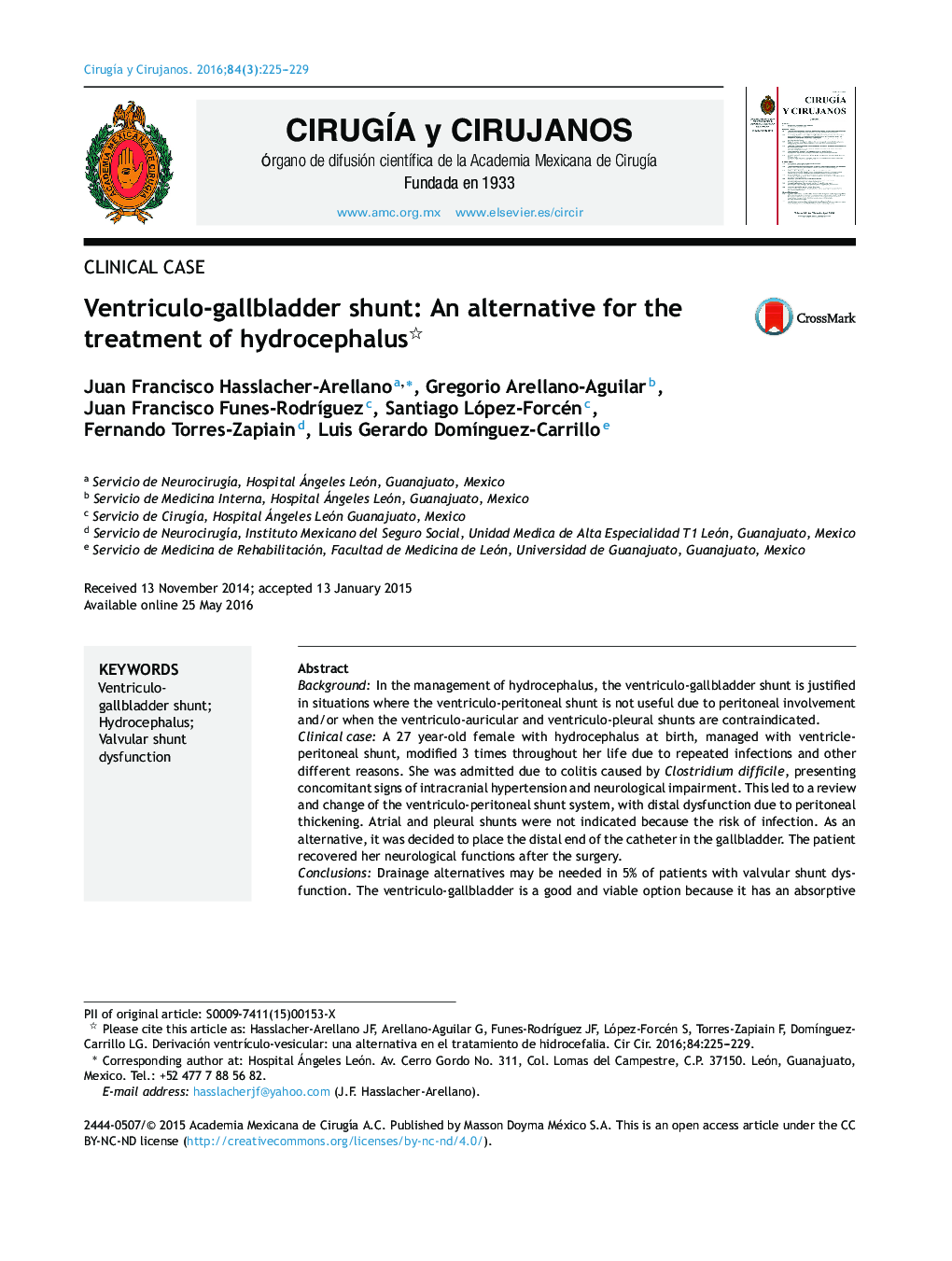| کد مقاله | کد نشریه | سال انتشار | مقاله انگلیسی | نسخه تمام متن |
|---|---|---|---|---|
| 4283351 | 1286882 | 2016 | 5 صفحه PDF | دانلود رایگان |

BackgroundIn the management of hydrocephalus, the ventriculo-gallbladder shunt is justified in situations where the ventriculo-peritoneal shunt is not useful due to peritoneal involvement and/or when the ventriculo-auricular and ventriculo-pleural shunts are contraindicated.Clinical caseA 27 year-old female with hydrocephalus at birth, managed with ventricle-peritoneal shunt, modified 3 times throughout her life due to repeated infections and other different reasons. She was admitted due to colitis caused by Clostridium difficile, presenting concomitant signs of intracranial hypertension and neurological impairment. This led to a review and change of the ventriculo-peritoneal shunt system, with distal dysfunction due to peritoneal thickening. Atrial and pleural shunts were not indicated because the risk of infection. As an alternative, it was decided to place the distal end of the catheter in the gallbladder. The patient recovered her neurological functions after the surgery.ConclusionsDrainage alternatives may be needed in 5% of patients with valvular shunt dysfunction. The ventriculo-gallbladder is a good and viable option because it has an absorptive capacity of 1500 cc liquid daily, besides being an excellent drainage through the bile duct. The abdominal surgery is easy to perform, and it is an alternative option in the failure of the ventriculo-peritoneal shunt.
ResumenAntecedentesEn el manejo de la hidrocefalia, la derivación ventrículo-vesicular se justifica en situaciones en donde la derivación ventrículo-peritoneal no es factible por alteración del peritoneo, o cuando las derivaciones ventrículo-auricular y ventrículo-pleural están contraindicadas.Caso clínicoPaciente femenina de 27 años con hidrocefalia al nacimiento, manejada con válvula de derivación ventrículo-peritoneal con recambio en 3 ocasiones por infección, es ingresada por colitis originada por Clostridium difficile. Presentaba de manera concomitante manifestaciones de hipertensión intracraneal con deterioro neurológico que obligaron a la revisión ventricular y a cambio de sistema de derivación ventrículo-peritoneal, con mal funcionamiento distal por engrosamiento del peritoneo. Ante la contraindicación de derivación auricular y pleural, se decidió colocar el catéter distal en vesícula biliar, logrando la recuperación de las funciones neurológicas.ConclusionesEn el 5% de los pacientes que presentan disfunción valvular se deben buscar distintas alternativas de drenaje. La vesícula biliar es una buena opción, pues su capacidad de absorción le permite manejar hasta 1,500 cc diarios de líquido; además de ser un excelente drenaje a través de la vía biliar, presenta facilidad de realización, considerándose en la actualidad un procedimiento viable como segunda opción de derivación ante el fallo de la derivación ventrículo-peritoneal.
Journal: Cirugía y Cirujanos (English Edition) - Volume 84, Issue 3, May–June 2016, Pages 225–229